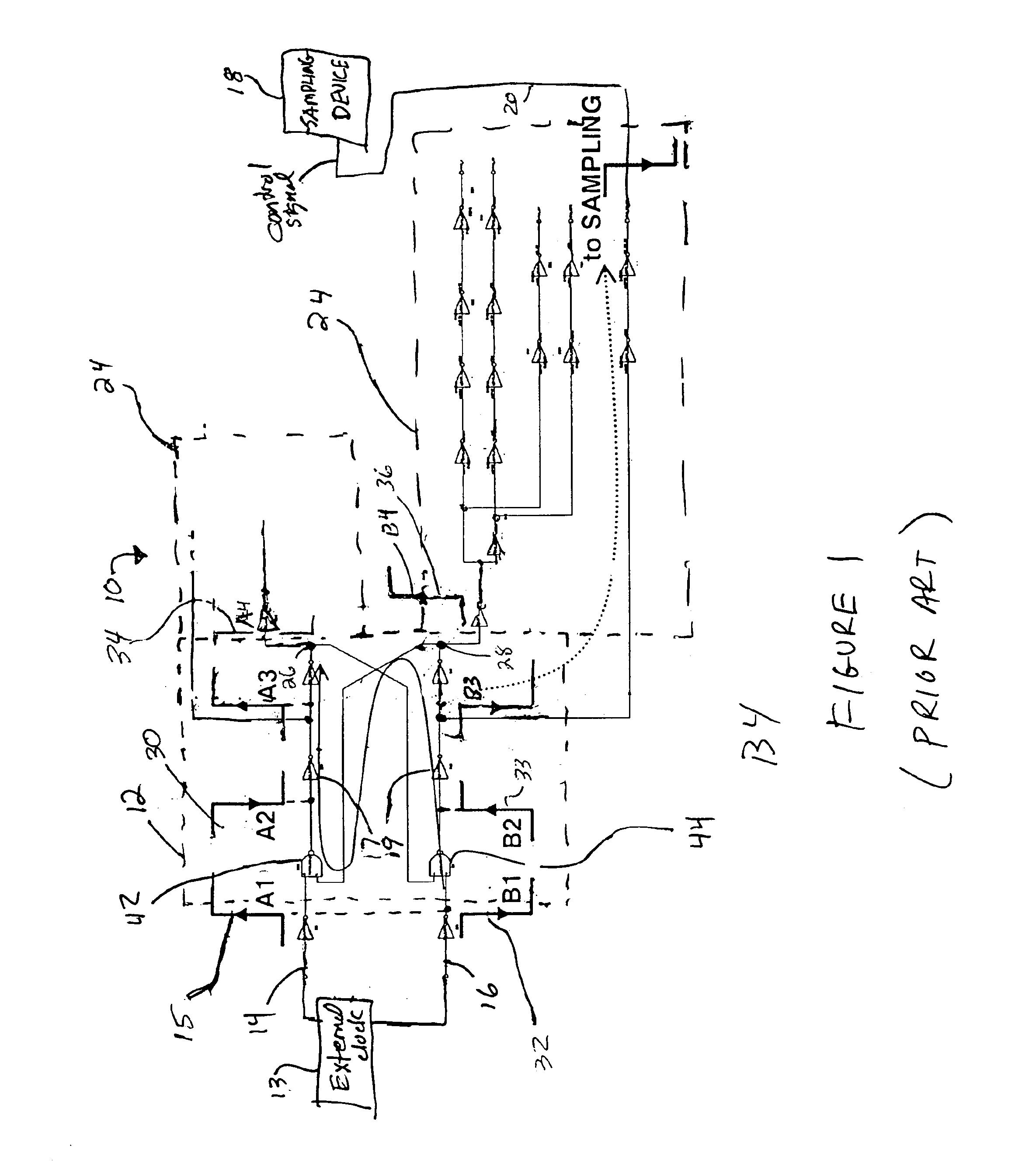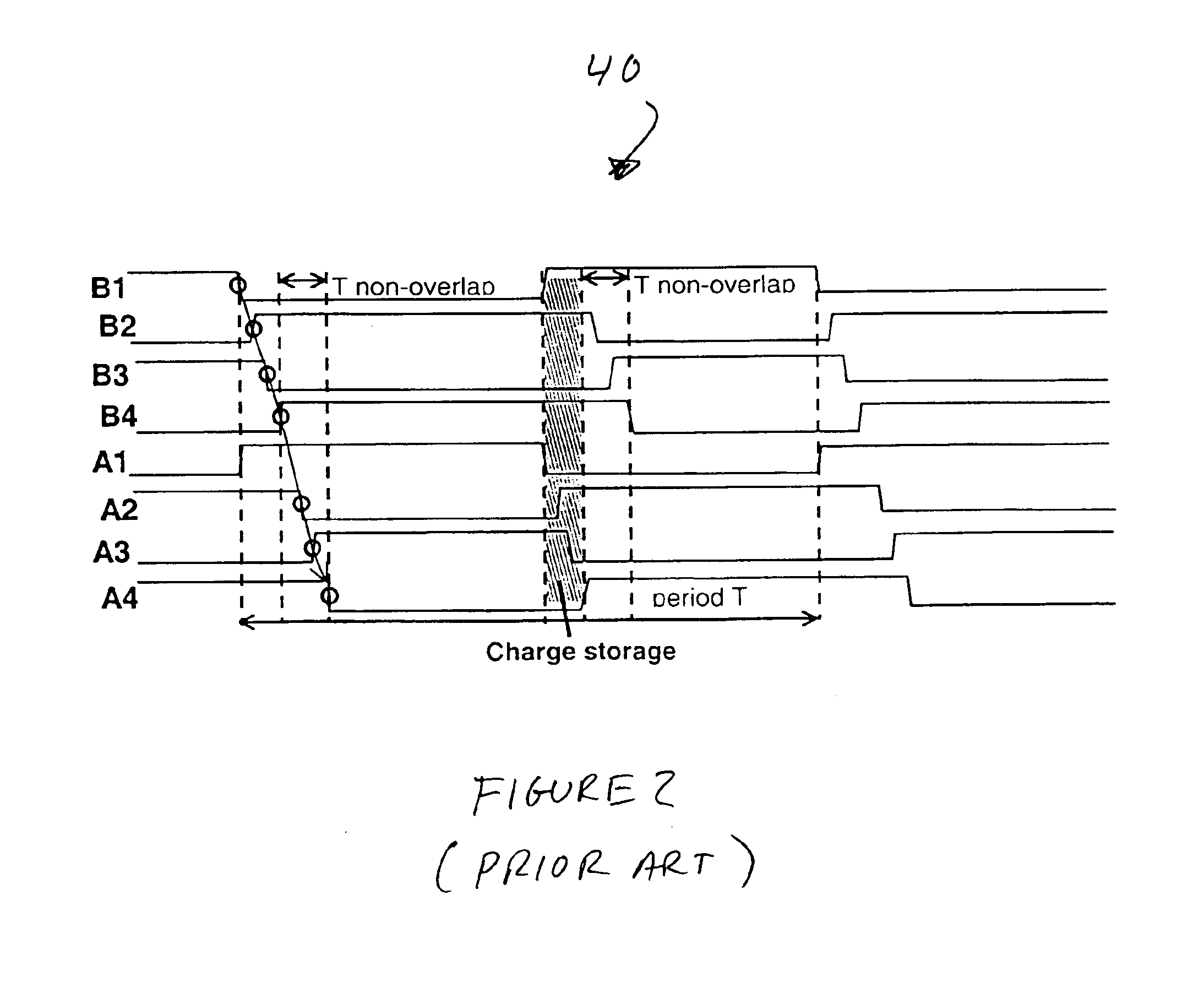Three-transistor NAND and NOR gates for two-phase clock generators
a clock generator and logic gate technology, applied in logic circuits, pulse manipulation, pulse techniques, etc., can solve the problems of introducing perturbations and significant degrading of clock period stability, and achieve the effect of improving the jitter performance of the clock generator and simplifying the logic gate nand/nor
- Summary
- Abstract
- Description
- Claims
- Application Information
AI Technical Summary
Benefits of technology
Problems solved by technology
Method used
Image
Examples
Embodiment Construction
[0018]Referring to FIG. 1, there is shown a prior art clock generator circuit 10, having a 2 input 6-gate loop network shown at 12 which performs non-overlapping of the two phases provided at inputs 14 and 16, and outputs a synchronization signal to a sampling device 18 at output 20. An inverter tree 24 receives the respective output 26 and 28 of the loop 12 and is a tapered clock distribution / edge regeneration circuitry. If the sampling device 18 receiving output 20 is modeled as a simple NMOSFET switch connected to a sampling capacitor for ease of discussion, the timing sequence in circuit 12 shown at 32, 33, and 28 drives the HIGH→LOW edge that shuts down the sampling transistor 18 and constitutes the sampling event for the incoming signal.
[0019]The operating principle of the loop network circuit 12 is based on inducing a transition 34 at the output node A4 (26) of the non-overlapping network 12, which transition 34 is not aligned with the complementary transition 36 at output no...
PUM
 Login to View More
Login to View More Abstract
Description
Claims
Application Information
 Login to View More
Login to View More - R&D
- Intellectual Property
- Life Sciences
- Materials
- Tech Scout
- Unparalleled Data Quality
- Higher Quality Content
- 60% Fewer Hallucinations
Browse by: Latest US Patents, China's latest patents, Technical Efficacy Thesaurus, Application Domain, Technology Topic, Popular Technical Reports.
© 2025 PatSnap. All rights reserved.Legal|Privacy policy|Modern Slavery Act Transparency Statement|Sitemap|About US| Contact US: help@patsnap.com



